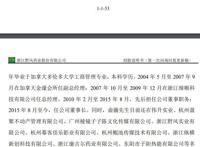子谦译文|创业教什么:六种主流创业方法的比较(63)
2023-06-03 来源:旧番剧
这项研究对教育工作者和决策者也有一定的影响。教育工作者现在可以使用三层框架和九大概念维度来帮助学生理解现有的创业方法,说明他们的优势、劣势和互补性,也可以在学术环境中更深入地探讨此处介绍的时间上、语境上、方向性和与不确定性相关的差异,让它成为一种更有效的教学和交流的方式。由创业方法以及其子管理理论所表现出的严格相关性的差异,呼吁教育工作者关注这些教授实践为方向的课程和模块的方法。教育工作者可以用透明的方式与学生交流有关理论严谨性、适用性,可操作性、经验主义的论证基础和上下文情境等方面的限制。精益创业和商业计划等令人兴奋或易于教受的方法也并非在所有情况下都有效。此外,决策者可以要求他们的研究资助具有更实际的相关性来解决研究、教育和创业生态系统中的这些缺陷,只有这样,才可以激励那些研究员、教育工作者、孵化器和加速器教练、大学官员、创业顾问、生态系统设计师,同时提高上下文语境和适用性的理论严谨性的门槛。所有这些努力都会加强正在多种环境下研究、推荐和实施的创业方法的经验主义证据基础。
Conclusions 结论
The comparison undertaken here has positioned empirical, theoretical and prescriptive work on entrepreneurial methods as an emerging scholarly field of not only inquiry but also of design (Romme 2016). Instead of studying effectuation as a dominant logic for “the entrepreneurial method” (cf. Sarasvathy and enkataraman 2011), scholars and practitioners could use the plural term “entrepreneurial methods” as a vehicle for coming together in co-creation efforts to bridge a rigor-relevance gap. This could be a pragmatic way to make the entrepreneurial process more explicit, graspable, teachable, and ultimately more successful. Such collaborative work will likely require a partial departure from detached observation-based research methods and instead require researchers to work closely with practitioners in prescriptive endeavors where empirical data is rigorously collected around what works, when, for whom, and in which context.
猜你喜欢
动漫推荐
免责声明:动漫番剧数据来源网络!本站不收费,无vip,请勿上当!
www.jiufanju.com-旧番剧





















